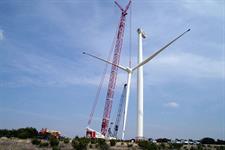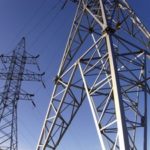Why GE is looking to law courts to defend US share
Energy Disrupter

The licences from GE for its low- and zero-voltage ride through technology (LVRT and ZVRT) could cost Siemens Gamesa Renewable Energy (SGRE) around $220 million, according to intellectual property expert and Instelstor CEO PhilipTotaro.
But that is far less than the $1 billion-plus SGRE might lose in US sales if tariffs are imposed on imported components that allegedly infringe GE’s patents for the technologies.
“GE is hoping SGRE takes the lesser of the two options, which helps GE line their pockets a little with some royalty income,” he said.
The electrical and control system components that are potentially impacted by the ITC complaint can be made in the US or sourced overseas in countries such as Spain, Germany or India.
If GE’s complaint is successful, SGRE might have to produce the components within the US, which could be more expensive due to higher labour rates or raw material costs. Such a scenario also might not be possible in the timeframe SGRE needs to deliver turbines to meet phase-out deadlines of the production tax credit (PTC).
The ITC can only police imported goods.
The potential result would be a higher priced SGRE product, or delays, with a presumption or hope on GE’s part that some project developers would switch their turbine orders to GE,” said Totaro.
“I believe this entire approach by GE is simply a tactic to bring SGRE to the negotiating table. The way patent litigation works in the US is you must file the patent lawsuit first, then negotiate a licence second,” said Totaro.
He added: “I lament the situation in the industry whereby IP rights get weaponised.”
Shashi Barla, a principal analyst for wind technology at Wood Mackenzie, noted the timing of GE filing the complaint, with the US market about to contract because of the expiration of the PTC.
“If the market contracts, GE needs to grab what it can from the competition,” said Barla. “The market is declining and the pressure is on.”
According to the ITC complaint, GE alleges that almost all SGRE turbines currently sold in the US infringe its patents. The only current SGRE turbines not included in the complaint are the next-generation offshore machines, the SG 11-200 DD and SG 14-222 DD, Barla noted.
The US is a sizeable market for SGRE. In 2019, US installations contributed to some 17% of SGRE’s global total. WoodMac forecasts the number will rise to 24% of SGRE’s global installs by the end of 2020.
Of the SGRE cumulative fleet of 21GW in the US, one of the main accused products, the SWT-2.3-108 turbine, alone contributes 34% of installations.
The other main accused product, the SG 4.X-145, has not yet been installed in the US, but WoodMac estimates SGRE had an approximately 1GW order backlog of the product in the US as of the end of Q2-2020.
All the SGRE products that GE is targeting amount to a hefty 47% of SGRE commutative installs in the US, according to Barla.
Update Our request for comment from GE was answered by a repeat of its statement published in part by Windpower Monthly on 4 August. The full text of that statement reads as folllows:
“GE Renewable Energy filed a patent infringement complaint against Siemens Gamesa Renewable Energy in the United States International Trade Commission alleging that SGRE’s wind turbines infringe on GE’s patented low-voltage-ride-through and zero-voltage-ride-through technologies, which ensure that the wind turbines will pass ride-through certification. It is GE’s view that the protection of intellectual property rights is the foundation for driving both innovation and investment in high technology industries generally, and the associated creation of high value jobs. GE believes strongly in the merits of its case against SGRE, and will continue to protect its technology in the U.S.” – GE Renewable Energy Spokesma
















